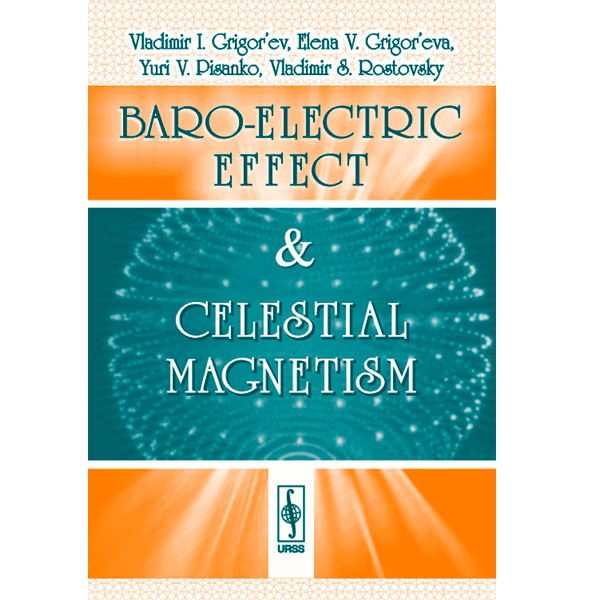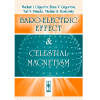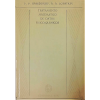Description
Introduction
Chapter 1. Baro-electric Effect
§ 1. Electric Fields Inside Inhomogeneous Conductors
§ 2. Thermodynamic Equilibrium
§ 3. Phenomenological Approach
§ 4. The Barnhill-Shiff Electric Field
§ 5. Microscopic Approach
Chapter 2. Baro-electric and Magnetic Field of Chemically Homogeneous Ball
§ 6. The Model
§ 7. Phenomenological Approach
§ 8. Microscopic Approach
§ 9. A Stone on the Ground
§ 10. The Pannekoek-Rosseland Electric Field
Chapter 3. Laboratory Studies of Baro-electric Effect
§ 11. The P.N.Lebedev Experiment
§ 12. Transportation of Ions
§ 13. Other Experimental Research
Chapter 4. Electrodynamics of Slowly Rotating Observer
§ 14. The Covariant Maxwell Equations
§ 15. Covariant Material Equations
§ 16. The Covariant Ohm Law
§ 17. The Ohm Law Under High Pressure and Strong Pressure Gradient
§ 18. Slow Rotation
§ 19. Rest Point Electric Charge in Slowly Rotating Frame of Reference
§ 20. Rotating Ball Carrying both Volume and Surface Bound Electric Charge
§ 21. Rotating Ball Carrying both Volume and Surface Bound Electric Charges with Spherical Co-centered Core Rotating with Different Angular Velocity
§ 22. Polar Solar Wind
Chapter 5. Quasi-stationary Baro-electric Effect
§ 23. Tidal Baro-electric Variations
§ 24. Amplitude of Baro-electric Tidal Variation at Celestial Bodies
§ 25. Fair Weather Electric Field
§ 26. Telluric Currents
§ 27. Baro-electric Field at the Moon
§ 28. Earthquake Electromagnetic Forerunners
§ 29. Magnetic Variations due to Non-uniform Rotation of a Planet
§ 30. Latitudinal Asymmetry of Baro-magnetic Field
Concluding Remarks
Appendix
Bibliography
Introduction
The nature of the terrestrial magnetism has been creating a problem in geophysics. Among various explanations of the phenomenon the most popular one is the dynamo theory: the Faraday electromagnetic induction connected to the very special self-maintaining motions of highly conductive material in the Earth interior is supposed to be resulted in the geomagnetic field. Unfortunately, such motions are unavailable for in-situ measurements, and the results of remote sensing observations not always allow the interpretation having a single meaning either. The uncertainty in the picture of intra-terrestrial motions impedes the specification of the magnetic field generated due to such motions.
Other ideas have also been proposed to explain cosmic magnetism, but usually these have been rejected without serious elaborations. This book, the first Russian edition of which [Григорьев, Григорьева, 1995] was published ten years ago, is devoted to the elaboration of such an idea — the Sutherland hypothesis proposed in 1903 and almost forgotten now. According to Sutherland the quasi-neutrality of the material of a self-gravitating object is broken (on the scale larger than the lattice constant, or the Debye radius) under the action of the pressure gradient — the reaction against gravity: light electrons are pressed out from the central region of high pressure towards the object surface. This way the negative electric charge abundance near the surface and positive one near the center of the object are formed. The axial rotation of such electric charge distribution creates the magnetic moment of rotating object.
The effect of the electric charge redistribution under the action of the pressure inhomogeneity is estimated quantitatively from the quantum theory point of view (among others) in this book. To describe the magnetic field, generated due to the axial rotation of electrically charged object, electrodynamics of slowly rotating observer is developed. It is based on general relativity because the rotating frame of reference of planetary observer is a non-inertial one. The contribution of the effect into the planetary magnetic moments of the solar system is estimated. It is responsible for approximately 10% of the total magnetic moment value in the terrestrial case. Also, considered are other possible geophysical manifestations of the phenomenon including effects in the fair weather electricity and possible earthquake forerunners.








